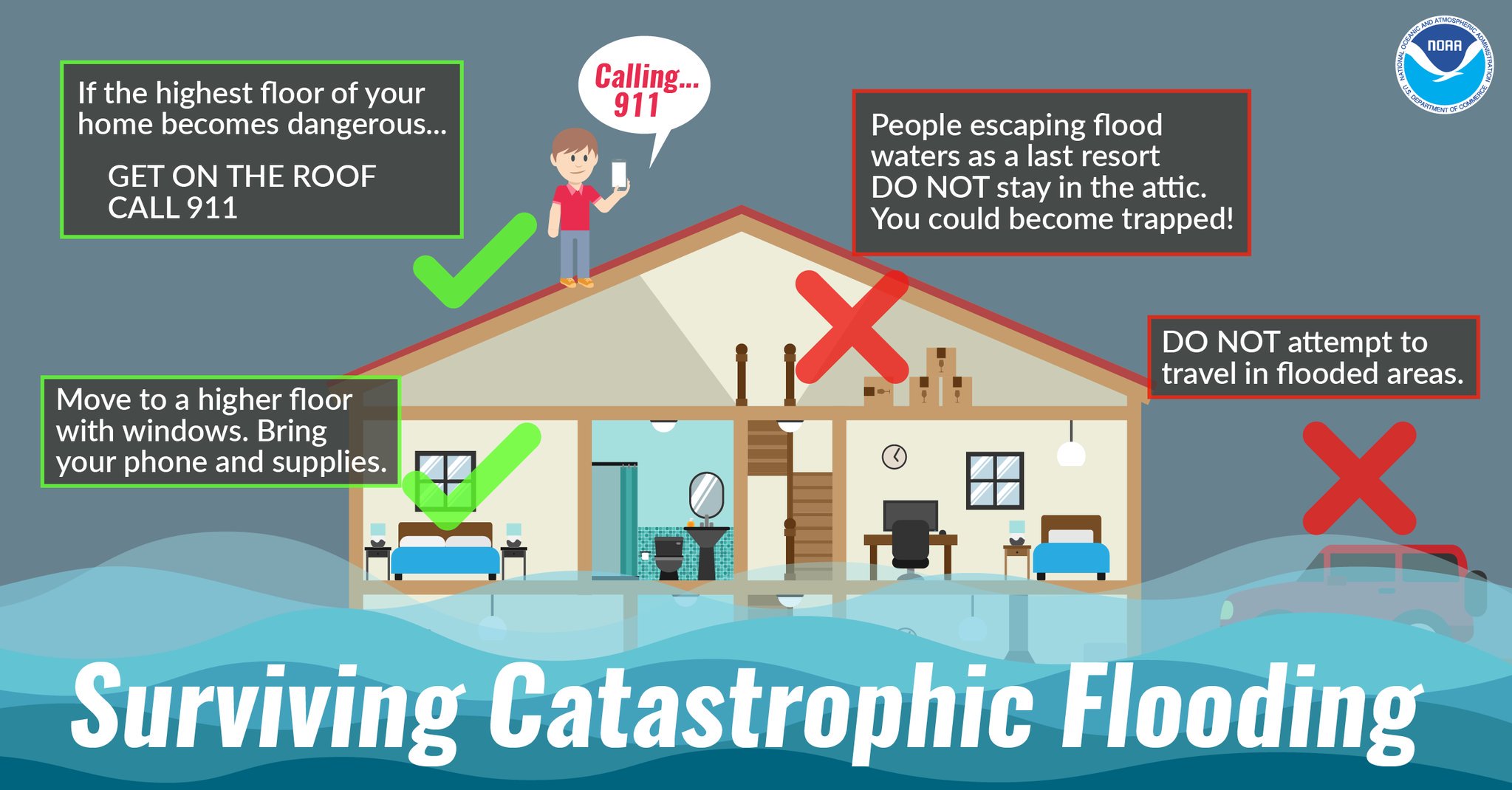Flash Flood Emergency Preparedness: A Step-by-Step Guide

Table of Contents
Understanding Flash Flood Risks and Warning Signs
Identifying High-Risk Areas
Flash floods are most likely to occur in areas with specific geographical features. Understanding your risk is the first step in effective flood prevention and response. High-risk areas are typically located near rivers, streams, creeks, canyons, and in low-lying areas. These locations are prone to rapid water accumulation during periods of intense rainfall.
To determine your specific risk level, you can utilize online flood maps provided by government agencies like the Federal Emergency Management Agency (FEMA) (link to FEMA flood map website). These maps show areas historically prone to flooding and can help you assess your vulnerability.
- Examples of high-risk locations:
- Near a riverbank or floodplain
- In valleys or canyons
- In areas with poor drainage
- Near construction sites with disturbed soil
Recognizing Warning Signs
Recognizing the warning signs of an impending flash flood is critical for timely evacuation and safety. Don't rely solely on official warnings; learn to identify visual and audible cues.
Visual cues include:
- Rapidly rising water levels in streams, rivers, or normally dry areas.
- Strong and fast-moving currents in bodies of water.
- Debris carried in the water, such as branches, logs, or trash.
- Water overflowing its banks.
Audible warning signs include:
-
Heavy and persistent rainfall, often accompanied by thunder.
-
Unusual sounds, such as roaring water or the rumbling of a swollen river.
-
Emergency sirens or public announcements.
-
What to do when you observe warning signs:
- Immediately move to higher ground.
- Avoid driving or walking through flooded areas.
- Seek shelter in a sturdy building.
- Contact emergency services if necessary.
Staying Informed
Staying informed about weather conditions is paramount. Regularly monitor weather forecasts and alerts from reliable sources.
- Reliable sources of weather information and emergency alerts:
- The National Weather Service (NWS) website and app.
- Local news broadcasts and weather channels.
- NOAA Weather Radio.
- Emergency alert systems on your smartphone (check your device settings).
- Local government websites and social media pages.
Developing a Family Emergency Plan
A well-defined family emergency plan is crucial for ensuring everyone's safety during a flash flood. This plan should outline evacuation routes, meeting points, and essential supplies.
Creating an Evacuation Plan
- Define evacuation routes and meeting points: Map out multiple routes to higher ground or a designated shelter, considering potential road closures. Designate multiple meeting points – one close to home and another further away, in case your primary meeting point is inaccessible.
- Identify safe locations: Know the location of higher ground in your area, as well as designated evacuation shelters provided by your local authorities.
- Steps to create an evacuation plan:
- Draw a map of your home and neighborhood, identifying potential escape routes.
- Designate a primary and secondary meeting place outside your home.
- Identify the location of nearby shelters or safe locations.
- Share the plan with all family members and ensure everyone understands their roles.
Assembling an Emergency Kit
A well-stocked emergency kit is essential for surviving a flash flood. This kit should contain essential supplies to sustain you and your family for several days.
-
Essential supplies:
- Water (one gallon per person per day for at least three days)
- Non-perishable food (canned goods, energy bars)
- First-aid kit and any necessary medications
- Flashlights and extra batteries
- Battery-powered or hand-crank radio
- Extra clothing and blankets
- Important documents (identification, insurance information, medical records)
- Cash
-
Detailed list of items: Create a detailed checklist and keep it updated.
Practicing the Plan
Regular practice is key to the effectiveness of your emergency plan. Conduct drills and discuss scenarios with your family to ensure everyone knows what to do.
- Steps to practice the emergency plan:
- Hold regular family meetings to review the plan.
- Conduct mock evacuations to test your routes and procedures.
- Adjust the plan based on lessons learned during practice runs.
Taking Action During a Flash Flood
Knowing how to act during a flash flood is crucial for minimizing risks. Prompt action can save lives.
Evacuating Safely
If you receive a flash flood warning, evacuate immediately.
- Safe evacuation practices:
- Follow established evacuation routes and instructions from authorities.
- Move to higher ground quickly and avoid flooded areas.
- Drive only if absolutely necessary and only if roads are passable. Turn around, don’t drown!
- Help vulnerable neighbors if possible, but prioritize your own safety.
Staying Safe Indoors
If evacuation is not possible, take the following precautions to stay safe indoors:
- Safe indoor practices during a flood:
- Move to the upper floors of a building, if possible.
- Turn off utilities (electricity, gas) if instructed to do so.
- Stay away from windows and doors.
- Monitor the situation using a battery-powered radio.
- Avoid contact with floodwaters, which may be contaminated.
Post-Flood Actions
After the floodwaters recede, exercise caution.
- Post-flood safety checks and actions:
- Wait for the all-clear from authorities before returning to your home.
- Assess damage and report any hazards to emergency services.
- Avoid contact with floodwaters, which may be contaminated.
- Take photos and videos of damage for insurance purposes.
- Seek professional help if needed for cleaning and repairs.
Conclusion
Flash flood emergency preparedness is not just about reacting to a crisis; it’s about proactively protecting yourself and your family. By understanding the risks, developing a comprehensive plan, and knowing how to react during a flash flood, you significantly reduce your vulnerability. Remember to regularly review and update your flash flood emergency plan. Don’t wait for a disaster to strike – prepare for flash floods today and ensure your safety and peace of mind. Take control of your safety and develop a robust flash flood preparedness plan now.

Featured Posts
-
 Sarah Vines Whats App Gaffe How A Simple Mistake Caused Chaos
May 26, 2025
Sarah Vines Whats App Gaffe How A Simple Mistake Caused Chaos
May 26, 2025 -
 Rangers Future Uncertain A New York Change Of Plans
May 26, 2025
Rangers Future Uncertain A New York Change Of Plans
May 26, 2025 -
 55 Richchya Naomi Kempbell Foto Z Yuvileynoyi Vechirki
May 26, 2025
55 Richchya Naomi Kempbell Foto Z Yuvileynoyi Vechirki
May 26, 2025 -
 Iptv Illegal Rtbf Et Rtl Belgium Intensifient La Lutte Contre Le Piratage
May 26, 2025
Iptv Illegal Rtbf Et Rtl Belgium Intensifient La Lutte Contre Le Piratage
May 26, 2025 -
 Addressing Oem Concerns Sg Wireless Expands Manufacturing Partnerships
May 26, 2025
Addressing Oem Concerns Sg Wireless Expands Manufacturing Partnerships
May 26, 2025
